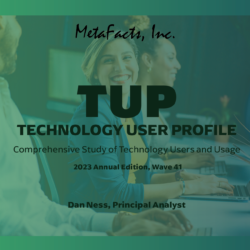Background:
Many major PC makers have recently launched AI Copilot+ PCs, enabling consumers and employees to make the most of many AI tools. The earliest brands include HP, Acer, ASUS, Lenovo, Microsoft, Dell, and Samsung, including Qualcomm technology. With so much promotional hype and confusion around AI, getting a reality check from users is essential.
Are early adopters of Copilot+ PCs very different from users of non-Copilot+ Windows 11 PCs? Windows 10 PCs? Apple Macs? The general online public?
Who are these newest buyers?
Which types of use cases are the early adopters getting AI assistance with?
How are their attitudes about AI different from the rest of the online world? Are they more positive, or are they more negative?
What are their concerns? Privacy? Wrong answers? Are they underwhelmed? And how strongly are they concerned?
What do they enjoy about using AI assistance? Creativity? Productivity? Learning new things?
Why did they buy a Copilot+ PC?
Approach:
This research is based on a survey of 11,852 online adults in the US, Germany, UK, and Japan, drawn and weighted to be representative of the online population. From this dataset, MetaFacts screened and profiled 3,131 respondents who use AI assistance with their regular activities. These use cases most used with Copilot+ PCs include personal creativity, professional creative software for work purposes, creating videos for work purposes, writing, and using professional creative software for personal purposes. Furthermore, the study details more than 80 activities, the share that are regularly done, and the percentage that are done using AI tools.

